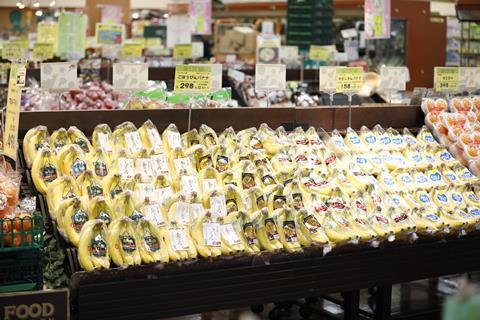Depreciation of the Japanese currency sees average per kilo cost of imports increase 14 per cent year-on-year in first quarter

The weakening of the yen to near-historic lows over recent months has pushed up the cost of imported fruits in the first quarter of 2024, according to analysis of data from Japan’s Ministry of Finance.
Japan imported a total of 340,000 tonnes of fresh fruit in the first quarter of 2024, a 1 per cent increase on the 336,000 tonnes imported over the same period in 2023.
The total CIF (cost, insurance and freight) value of imports, however, rose by 16 per cent year-on-year to ¥56.58bn.
The average per kilo cost price of imported fruit climbed by similar levels, increasing 14 per cent to ¥166 from ¥145 in the first quarter of 2023.
On a month-to-month level, Japan imported a total of 127,000 tonnes of fresh fruit in March 2024, down 5 per cent from the 134,000 tonnes imported in March 2023. The average value of imported fruit per kilogram rose to ¥172, an 11 per cent increase compared to ¥155 per kilogram in March 2023.
Analysing the data, Jack Moriya, president of major Japanese wholesaler-importer Tokyo Seika, said the cost increases clearly underlined the impact of the weaker Japanese yen against the US dollar.
“It’s obvious that a weaker Japanese yen against US dollar [contributed] to the rise in import prices,” he said.
The yen has been steadily losing value over the last five years. In March 2024 it was 149.70 against the US dollar compared to 133.86 in March 2023, 115.16 in March 2022 and 107.42 in March 2020.
The yen has also hit multi-year lows against other currencies including the euro, the Australian dollar and the Chinese yuan.
The slide in value could see the cost of imports continue to rise, which does not bode well for consumers already facing cost-of-living pressures in Japan.
Bananas and pineapples remained the largest fruit import categories in 2024, with 242,000 tonnes and 38,000 tonnes imported in the first quarter respectively. Banana imports rose 4 per cent from the 232,000 tonnes imported in the first quarter of 2023 while pineapple declined slightly from the 38,500 tonnes imported in the first quarter of last year.
The top banana importing countries remained the same, with the Philippines supplying 189,000 tonnes in the first quarter of 2024 (up from 185,000 tonnes in 2023), Ecuador shipping 23,000 tonnes (up from 21,000 tonnes in 2023) and Mexico sending 15,000 tonnes (up from 14,500 tonnes in 2023). Vietnam made a notable leap from 2,000 tonnes in the first quarter of 2023 to 5,000 tonnes in 2024.
“Vietnam’s growth is remarkable even though the absolute volume is still small,” Moriya said.
A total of 1,600 tonnes of kiwifruit was imported in the first quarter of 2024, up 43 per cent from 2023’s first quarter. Volumes were largely made up of US imports (838 tonnes) as well as newly imported Zespri RubyRed kiwifruit from New Zealand (394 tonnes). Moriya said New Zealand kiwifruit imports do not start in earnest until April, with substantial volumes expected in the coming months.



